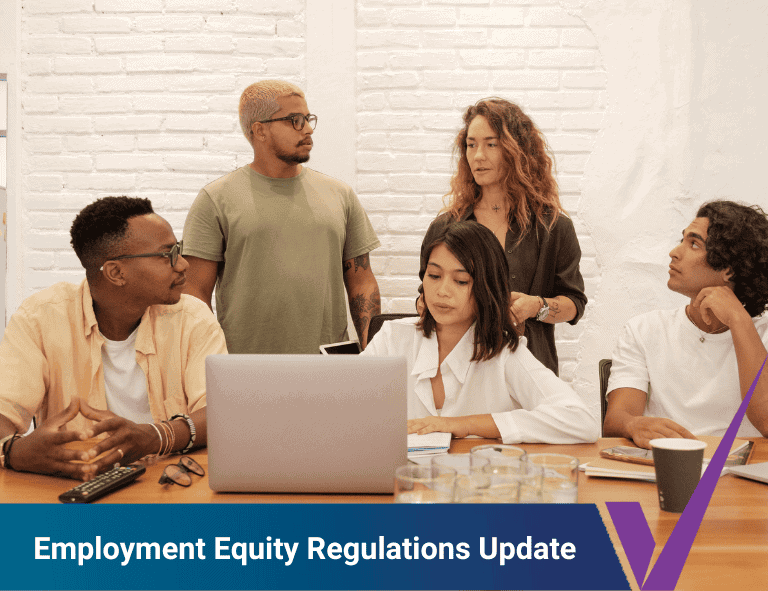
On 15 April 2025, the Department of Employment and Labour officially repealed the 2014 Employment Equity Regulations and introduced the Employment Equity Regulations, 2025. These changes are designed to advance workplace transformation, promote equality, and strengthen accountability among designated employers in South Africa. These regulations replace the 2014 version and are now in effect.
Key takeaways from the NEW Employment Equity Regulations 2025:
1.  Equal Pay for Work of Equal Value
Equal Pay for Work of Equal Value
Key Focus:
- Employers must assess whether employees performing work of equal value are being remunerated equally.
- Discrimination based on race, gender, or disability is explicitly prohibited.
Assessment Criteria:
- Skills, qualifications, and experience.
- Responsibility (people, finances, materials).
- Physical and emotional effort.
- Working conditions and environment.
Permissible Differentiations:
- Seniority, performance, qualifications.
- Market-related shortages or justified restructuring scenarios.

2.  Duties of Designated Employers
Duties of Designated Employers
EE Analysis & Data Collection
- Must collect employee demographic info (via EEA1 forms).
- Analyse workplace policies and environment for barriers to employment equity.
- Use national or regional EAP (Economically Active Population) data.
Employment Equity Plan (EE Plan)
- Required period: 1 Sept 2025 – 31 Aug 2030.
- Must align with sector-specific 5-year numerical targets.
- Annual targets required for the top 4 occupational levels.
- Consider turnover, recruitment trends, and inherent job requirements.
Reporting Duties
- Annual submission of EEA2 & EEA4 forms (online or hand-delivered).
- Employers with multiple entities may submit consolidated reports.
- EE Reports become public documents (except EEA4).

3.  Enforcement Mechanisms
Enforcement Mechanisms
Tools Now in Use:
- EEA5: Written undertaking.
- EEA6: Compliance order.
- EEA7: Director-General Review Form.
- Orders can now be served via email and are enforceable via the Labour Court.

4.  EE Compliance Certificate (Section 53)
EE Compliance Certificate (Section 53)
Requirements for Issuance:
- Submission of annual EE report.
- Compliance with numerical targets (or provide valid justifications).
- Compliance with the National Minimum Wage.
- No discrimination findings by CCMA or Labour Court in the last 12 months.
Valid for: 12 months
Valid Reasons for Non-Compliance:
- Lack of recruitment opportunities.
- Mergers/acquisitions.
- Economic conditions or court awards.

5.  Key Forms and Templates
Key Forms and Templates
Here are a few critical forms now in use:
- EEA13: EE Plan template.
- EEA12: Analysis template.
- EEA16A/B: Compliance Certificates.
- EEA17: Sector classification reference.
- Plus 15+ other forms covering declarations, assessments, reporting, and requests.

 Final Thoughts
Final Thoughts
These new regulations signal a firm shift toward enforcement and transformation. Employers—particularly designated ones—must now:




If you’re a designated employer navigating these changes, HR Consult services can help you:
- Conduct thorough EE analyses,
- Develop compliant EE Plans,
- Prepare accurate EE Reports,
- Train your HR teams,
- Apply for your EE Compliance Certificate,
- And mitigate legal risk.
Download and read the Government Gazette here.

Contact: Jaco Jacobs
Office: 012 997 0037
E-mail: consult@beeanalyst.co.za
 Employment Equity Regulations 2025
Employment Equity Regulations 2025 2025 Sectoral Numerical Targets
2025 Sectoral Numerical Targets
No comment yet, add your voice below!